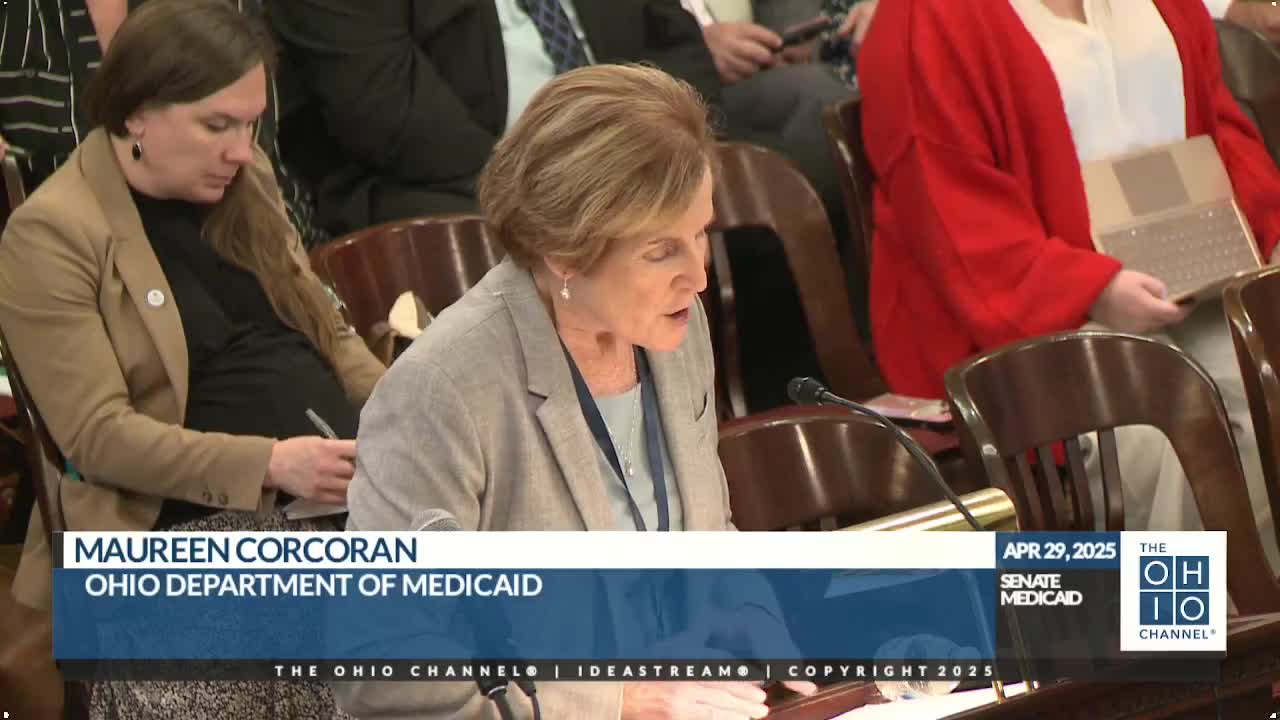Ohio Medicaid reports $140M savings and 99% pharmacy participation under single PBM model
April 29, 2025 | Medicaid, Senate, Committees, Legislative, Ohio
This article was created by AI summarizing key points discussed. AI makes mistakes, so for full details and context, please refer to the video of the full meeting. Please report any errors so we can fix them. Report an error »

The Ohio Senate Medicaid Committee convened on April 29, 2025, to discuss significant updates regarding the state's Medicaid program, focusing on the implementation of a single Pharmacy Benefit Manager (PBM) and its implications for transparency and cost savings.
The meeting began with a presentation highlighting the benefits of the single PBM model, which has reportedly reduced administrative spending by $333 million across managed care plans and the department. This model has also provided Ohio pharmacies with nearly $625 million in additional dispensing fees, increasing the average dispensing fee to over $9, compared to just 73 cents under the previous system. The speaker emphasized that these funds are benefiting local Ohio businesses rather than external pharmacy benefit managers.
The committee noted that the first two years of the single PBM have resulted in net savings of approximately $140 million, which, while not considered substantial, indicates progress in improving access to care, particularly in rural areas. The speaker proudly stated that over 99% of pharmacies in Ohio now participate in the Medicaid program, marking a historic level of access for residents.
Further discussions addressed the importance of program integrity and sustainability. The committee highlighted ongoing efforts to enhance compliance and transparency within the Medicaid system. An actuarial assessment conducted by the Milliman Group was referenced, providing detailed insights into the costs associated with medications used by Medicaid recipients.
The meeting also touched on the "unwinding" process, which involves reassessing eligibility and enrollment for Medicaid recipients. The committee discussed the use of various data sources to improve the assessment process and mentioned plans to explore additional data sources to enhance capabilities.
Additionally, the implementation of electronic visit verification for home and community-based waivers was discussed. The committee noted that while claims had not been denied based on this verification until recently, providers have been trained and have access to data regarding their claim submissions.
The meeting concluded with a discussion on the magnitude of the Medicaid budget and the uncertainties surrounding federal funding, particularly regarding potential changes to the federal matching rate for the expansion population. The committee acknowledged the need for protective measures, referred to as "trigger language," to safeguard the state from financial impacts due to these uncertainties.
Overall, the meeting underscored the ongoing efforts to enhance the efficiency and transparency of Ohio's Medicaid program while addressing the challenges posed by federal policy changes and economic conditions.
The meeting began with a presentation highlighting the benefits of the single PBM model, which has reportedly reduced administrative spending by $333 million across managed care plans and the department. This model has also provided Ohio pharmacies with nearly $625 million in additional dispensing fees, increasing the average dispensing fee to over $9, compared to just 73 cents under the previous system. The speaker emphasized that these funds are benefiting local Ohio businesses rather than external pharmacy benefit managers.
The committee noted that the first two years of the single PBM have resulted in net savings of approximately $140 million, which, while not considered substantial, indicates progress in improving access to care, particularly in rural areas. The speaker proudly stated that over 99% of pharmacies in Ohio now participate in the Medicaid program, marking a historic level of access for residents.
Further discussions addressed the importance of program integrity and sustainability. The committee highlighted ongoing efforts to enhance compliance and transparency within the Medicaid system. An actuarial assessment conducted by the Milliman Group was referenced, providing detailed insights into the costs associated with medications used by Medicaid recipients.
The meeting also touched on the "unwinding" process, which involves reassessing eligibility and enrollment for Medicaid recipients. The committee discussed the use of various data sources to improve the assessment process and mentioned plans to explore additional data sources to enhance capabilities.
Additionally, the implementation of electronic visit verification for home and community-based waivers was discussed. The committee noted that while claims had not been denied based on this verification until recently, providers have been trained and have access to data regarding their claim submissions.
The meeting concluded with a discussion on the magnitude of the Medicaid budget and the uncertainties surrounding federal funding, particularly regarding potential changes to the federal matching rate for the expansion population. The committee acknowledged the need for protective measures, referred to as "trigger language," to safeguard the state from financial impacts due to these uncertainties.
Overall, the meeting underscored the ongoing efforts to enhance the efficiency and transparency of Ohio's Medicaid program while addressing the challenges posed by federal policy changes and economic conditions.
View full meeting
This article is based on a recent meeting—watch the full video and explore the complete transcript for deeper insights into the discussion.
View full meeting
